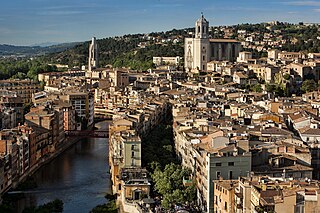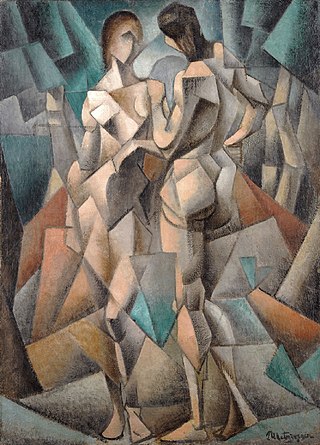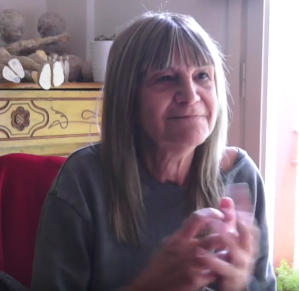Related Research Articles

Girona is the capital city of the province of Girona in the autonomous community of Catalonia, Spain, at the confluence of the Ter, Onyar, Galligants, and Güell rivers. The city had an official population of 103,369 in 2020 but, the population of the Girona–Salt urban area is estimated to be about 156,400 (2020). Girona is also capital of the comarca of the Gironès and the vegueria of Girona. Since much of the old quarter of this ancient city has been preserved, Girona is a popular destination for tourists. The city is located 99 km (62 mi) northeast of Barcelona.

Alexandre Deulofeu i Torres was a Catalan politician and philosopher of history. He wrote about what he called the Mathematics of History, a cyclical theory on the evolution of civilizations.

The Madrid–Barcelona high-speed rail line is a 621-kilometre (385.9 mi) standard gauge railway line inaugurated on 20 February 2008. Designed for speeds of 350 km/h (217.5 mph) and compatibility with neighbouring countries' rail systems, it connects the cities of Madrid and Barcelona in 2 hours 30 minutes. In Barcelona the line is connected with the Perpignan–Barcelona high-speed rail line leading into France which connects it to the European high speed network.

Rail transport in Catalonia operates on three rail gauges and services are operated by a variety of public operators:

Albert Ràfols-Casamada was a Spanish painter, poet and art teacher involved in the vanguard movements of his time. He is considered one of the most important, multifaceted Catalan artists of his time. His artwork began in the post-expressionist, figurative sphere but soon developed into his own abstract style grounded in a poetic rendering of everyday reality.

The Molí de la Torre is a Catalan farmhouse located near Figueres in the municipality of El Far d'Empordà. It was built in the mid-19th century and is considered one of the most important house and farm of Empordà and included in the register of Architectural Heritage of Catalonia.
Arnau Sala Descals is a Spanish retired footballer who played as a defender, and a manager. He is currently the assistant manager of Girona FC.
Eduard 'Edu' Vílchez Ortiz is a Spanish retired footballer who played as a forward, and is a manager.
Jordi Condom Aulí is a Spanish former professional footballer who played as a midfielder, currently a manager.
Moisès Sanmartín (Villèlia) Puig, Moisès Sanmartín i Puig, known with the pseudonym of Moisès Villèlia was a Catalan sculptor and poet.

Galeries Dalmau was an art gallery in Barcelona, Spain, from 1906 to 1930. The gallery was founded and managed by the Symbolist painter and restorer Josep Dalmau i Rafel. The aim was to promote, import and export avant-garde artistic talent. Dalmau is credited for having launched avant-garde art in Spain.

Sol Picó Monllor is a Spanish dancer and choreographer. She has studied Spanish dance, ballet, and contemporary dance, and combines different techniques and languages in her productions in a groundbreaking way. In 1993 she created the Sol Picó Company, with which she has become one of the most heterodox choreographers and dancers of the Spanish contemporary scene. She has received numerous awards, including 10 Premios Max, the National Dance Award of Catalonia (2004), the City of Barcelona Dance Award (2015) and the National Dance Award of Spain (2016).

Enric Franquesa Dolz is a Spanish professional footballer who plays as a left back for CD Leganés.

La Veu de Catalunya was a Catalan newspaper founded by Enric Prat de la Riba that was published in Barcelona from 1 January 1899 to 8 January 1937, with two editions daily.

Anna Manel·la or Anna Manel·la i Llinàs was a Spanish and Catalan sculptor and painter. She was known for her figures representing lost childhood. In 2022, the Museu de la Garrotxa devoted a monographic exhibition to her work: "If I could. Anna Manel·la (1950-2019)." Also in 2022, a group of friends published the book Anna Manel·la. La dona i el mur, which is a compilation of texts discussing the artist's life and works.
Francesc Isgleas i Piarnau was a Catalan anarcho-syndicalist.
Eric Monjonell Torras is a Spanish footballer who plays as a central defender for Ibiza.

Francesc Abad is a Spanish artist known for conceptual art, body art, and land art.
Dawda Camara Sankharé is a Spanish professional footballer who plays as a forward for Spanish club Girona FC.

Andreu Febrer i Callís was a Catalan soldier, courtier and poet.
References
- 1 2 3 4 5 6 7 8 9 10 11 12 Inés Padrosa Gorgot: Diccionari biogràfic de l’Alt Empordà. Diputació, Girona 2009, ISBN 978-84-96747-54-8, p. 155.
- 1 2 3 4 5 6 7 8 Sebastià Roig: Enric Bug Lapedra. In: Revista de Girona, 2012, p. 85.
- ↑ Banda Tramuntana – Himne De La Unió. In: Discogs
- ↑ Lluís Freixas Mascort: Vinyetes i ninotaires. In: El Punt Avui, 12 July 2012, p. 14.
- 1 2 3 4 5 6 Il·lustracions: Enric Bug Lapedra. In: Revista de Girona 267, 2011, p. 123.
- 1 2 3 4 Adolfo Gracia: Enric Bug Lapedra. In: tebeosfera.com, 2009.
- ↑ Elisa Arribas Álamo: El Cómic Marginal como medio de expresión. University of Castilla–La Mancha, Cuenca 2010/2011, p. 50.
- 1 2 Sebastià Roig: Les senyores d'Enric Bug. In: diaridegirona.cat, 8 July 2011.
- ↑ Carmelo Hernandodes. Una Semiotica para el ojo en vivo. In: 200 dias en Sing Sing No.3, November 2009, S. 9.
- ↑ Astronomía pirata. In: Kulturunea, kmliburutegia.net
- 1 2 Enric Bug (Bug Rogers). In: LinkedIn.
- ↑ Charly 10. In: Hora Nova: Periòdic independent de l’Empordà, No. 347, 17 January 1984.
- 1 2 3 Enric Bug presenta a l’Espai d’Art Espelt una mostra retrospectiva. In: gironanoticies.com, 3 June 2011.
- ↑ Sebastià Roig: Quan la badia de Roses remenava el cul. In: raco.cat, 2015.
- ↑ Lidia Gomez Garcia Lalidius: Chic Roses Discoteca. In: discotecas70-80barcelona-cat.com, 11 November 2016.
- ↑ Alfons Petit: Quan Chic era la millor discoteca d'Europa. In: Diari de Girona, 7 August 2020.
- ↑ Charly Privat Lamp 1994 by EnricBug. Lamp Art Deco Design by EnricBug (Enric Bug), Table lamp from Spain circa 1980. (Pamono), 1980 Table Lamp, Mdf, Beech and Pine Woods, Plexiglass and Parchment - Spain. (Decaso)
- ↑ Datasheet Taus and Alix. Febrer Display S.A., 1985.
- ↑ Screenshots from the movie Batman (1989)
- ↑ Screenshots from the movie The Two Jakes (1989)
- ↑ Catalogues of „Febrer Collection Abstract“ from 1985. Data sheets, Febrer Display S.A., 1985.
- ↑ Josep Puigbert: Figueres fo una oferta d′Pestíu amb actes diaris per trencar la imatge de ciutat apàtica. In: El Punt, 27 June 1996, p. 20.
- ↑ Màrius Serra: Pangrama. In: enigmisticamarius.com, 21 November 1996.
- ↑ Vilajuïga: Retrospectiva d´Enric Bug a l´Espai d’Art del Espelt. In: bonart.cat, 2011.
- ↑ Xavi Toral: F.A.C.E.S d’Enric Bug a la Galeria Aljub. Archived 28 January 2021 at the Wayback Machine In: figueres.com, 29 April 2014.
- ↑ Enric Bug Lapedra - Bug Rogers. In: arteinformado.com